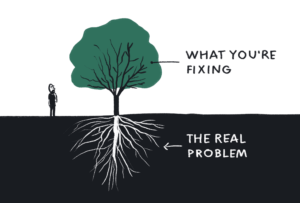As you perused our website, you may have noticed that we use the term “human security” instead of “homeland security” or “national security.” So, what is human security?
Human Security is the intersection of environmental, personal, economic, political, and food security. It is the highest goal we can hope to achieve. The pinnacle of all our goals and the most complex to accomplish.
People today face many types and combinations of threats. These overlapping threats can grow exponentially and spread rapidly. Human security is identifying and addressing these widespread and cross-cutting challenges to survival, livelihood, and dignity.
The eight-part understanding of what human security entails can be found in a resolution by the United Nations General Assembly in 2012 (66/290). Its opening sentiment reads as follows:
The right of people to live in freedom and dignity, free from poverty and despair. All individuals, in particular vulnerable people, are entitled to freedom from fear and freedom from want, with an equal opportunity to enjoy all their rights and fully develop their human potential.
By embracing the idea of human security for everyone, everywhere, we have chosen to approach problems without the barriers and limitations that a “homeland” or “national” focus may provide.
By recognizing that human security encompasses every corner of mankind, we have chosen to design and implement solutions, technologies, and thought processes that are accessible to anyone, anywhere.
The pursuit of human security is a cornerstone for the United Nations. It is also a mission that we have taken on as we develop practical solutions for the world’s hardest problems.
What does it mean to approach problems and design solutions with human security in mind?
The UN GA Resolution 66/290 states that
“Human security calls for people-centered, comprehensive, context-specific and prevention-oriented responses that strengthen the protection and empowerment of all people and all communities.”
Let’s break down what that means.
Most people strive to make a good first impression. They do their best to be open, friendly, memorable. Why? Because most, if not all people crave some form of human connection. People want to be more than just a face in a crowd. And so, each person showcases their individuality in hopes that you will remember them as a unique thread in the fabric of your life.
On an individual level, being people-centered means that in conversation with a new person, you are attentive, inquisitive, and respectful. You allow each person you interact with to feel heard and understood.
At a company level, we search for people with those people-centered talents. We ensure that all of our employees have the resources they need to continue to advance, improve, and grow. As a people-centered team, we focus on how to best address individual challenges. In doing so, we are able to offer customized support for those seeking our assistance.
On a global level, being people-centered means acknowledging that what we do affects each individual in the communities we work with. We want all our products to better the lives of each person, and subsequently, raise the standard for the entire community.
Comprehensive means something is complete and contains all elements or aspects of that something. For example, a comprehensive exam would cover anything you learned or studied during a course.
Importantly, comprehensive also means inclusive. For an exam to be comprehensive it must include everything you have learned. For our company to be comprehensive, it must include each of our employees’ ideas and perspectives. Inclusivity is something that we are always striving to improve. And, it is something that continues to change as our world grows.
For us to produce comprehensive solutions, we must take into consideration all those we hope to help. We have to identify all of the individual challenges faced, and find the best way to address them.
This may seem like a daunting task – how could we possibly identify and address every individuals’ problems? It is difficult, and sometimes we fall short, but we are always up to the task of being inclusive and comprehensive as we learn and grow.
As we well know, no two situations are exactly the same. This, in turn, means that no two solutions can be exactly the same. What works in one scenario may not necessarily work for another.
What does this mean for the way that our company approaches a problem? First, it means that no matter how similar a situation appears to be, we do our best to take on each situation with fresh eyes. Second, when approaching a problem we must understand what the root issue is. We need to make sure that we are treating the core of the problem and not the symptoms. Third, this means that the “big” solutions we create must be adaptable and flexible. Rigid solutions will render us incapable of providing the comprehensive and people-centered assistance that we are striving for.

At first glance, this piece of our definition may seem counterintuitive. How can you have a prevention-oriented response? Don’t prevention and response occur on opposite ends of the situational timeline? This is true to some degree. However, it is also true that appropriate responses will aid in preventing future problems of similar degree and magnitude or prevent the offshoot of additional problems.
We always hope to predict and anticipate instead of reacting to a situation. In order to do so, we need to have processes in place so we can react appropriately and effectively when we do not anticipate every potential outcome.
Whitespace is excited to partner with others who aim to put the human security mission first. Do you have a problem that needs solving? We want to help. Get in touch with us via our contact page.
Want to see more #WebsiteWednesday content? Check out our next post here.
